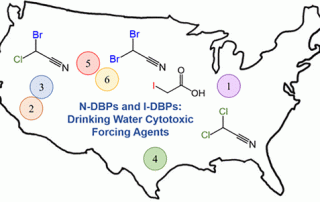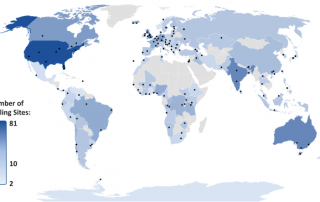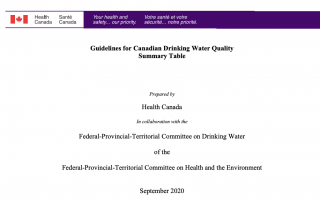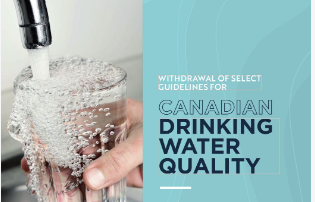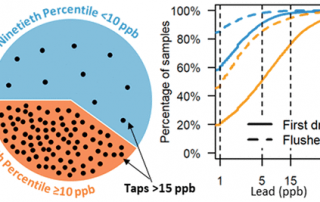Stay in the know on all things drinking water
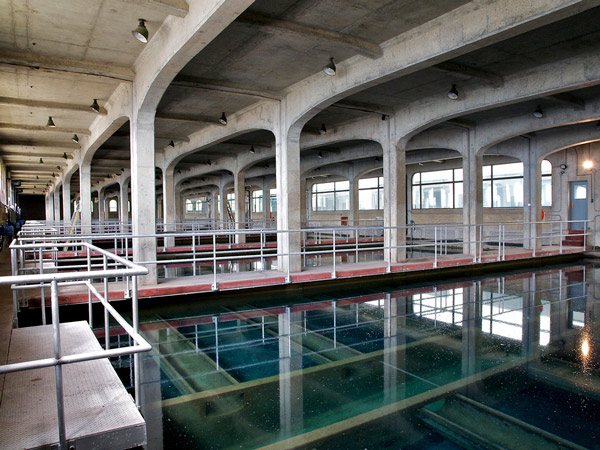

Dr. William B. Anderson retired on January 1, 2025. He maintains a connection to the Water Science, Technology & Policy Group through an adjunct professorship to guide his remaining graduate students through to their degree completion. He was previously a Research Associate Professor and the Associate Director of the group. He has been active in drinking water quality and treatment research for over 45 years, more recently focusing on contaminant adsorption to microplastics, microplastic removal through chemically assisted filtration, pathogen removal, perfluorinated compounds, cyanobacteria and their toxins, and biological filtration. He has served on the Boards of Directors of the Ontario Water Works Association (OWWA) and the Walkerton Clean Water Centre and currently serves on the OWWA Advocacy Steering Committee and the Canadian Water and Wastewater Association Drinking Water Quality Committee. Please note that Dr. Anderson is no longer accepting graduate students.
The past 15 years, Bill has maintained an email service drawing attention to items of interest to drinking water professionals including, for example, the latest research articles, regulatory updates, outbreak reports, topical issues, and media stories. Bill’s email service has expanded over time to include all interested individuals. These emails are now also archived here in a blog format as they are released, which can be explored by category or simply by scrolling through the posts below.
If you would like to join Bill’s email list for updates straight to your inbox, you can send an email to Bill to be added to the list.
Drivers of Disinfection Byproduct Cytotoxicity in U.S. Drinking Water-Should other DBPs be Considered for Regulation
We report the most comprehensive investigation of drinking water toxicity to date, with measurements of extracted whole-water mammalian cell chronic cytotoxicity, over 70 regulated and priority unregulated DBPs, and total organic chlorine, bromine, and iodine, revealing a more complete picture of toxicity drivers.
Pharmaceutical pollution of the world’s rivers
a global-scale study of active pharmaceutical ingredients (API) pollution in 258 of the world’s rivers, representing the environmental influence of 471.4 million people across 137 geographic regions.
Unregulated Contaminants Monitoring Rule (UCMR5) includes smaller systems & 29 PFAS
As implied by the name it is the 5th in a series of monitoring rules that provides data for regulatory considerations. An important highlight is the inclusion of 29 different per-and polyfluoroalkyl substances (table below).
Guidance on Monitoring the Biological Stability of Drinking Water in Distribution Systems
Following a request for comments in July 2020 they have released Guidance on Monitoring the Biological Stability of Drinking Water in Distribution Systems. The intent of the document “is to provide responsible authorities, such as municipalities and water system operators, with an overview of: 1) causes of microbial water quality deterioration in the distribution system; 2) monitoring tools that can be used to assess biological stability; and 3) distribution system management strategies.
Health Canada withdrew existing guidelines for 17 contaminants
Health Canada has withdrawn the existing Guidelines for Canadian Drinking Water Quality for 17 chemical substances, including 13 pesticides. The rational was described as being no longer required since these contaminants are unlikely to be found in Canadian drinking water at levels that may pose a risk to human health.
Using the rule revisions five-sample approach to identify schools with increased lead
an interesting paper on an “approach to classify a school’s lead risk, which could help water utilities and schools prioritizing testing and remediation efforts,” recently appeared in the journal ‘Environmental Science & Technology Letters’.

